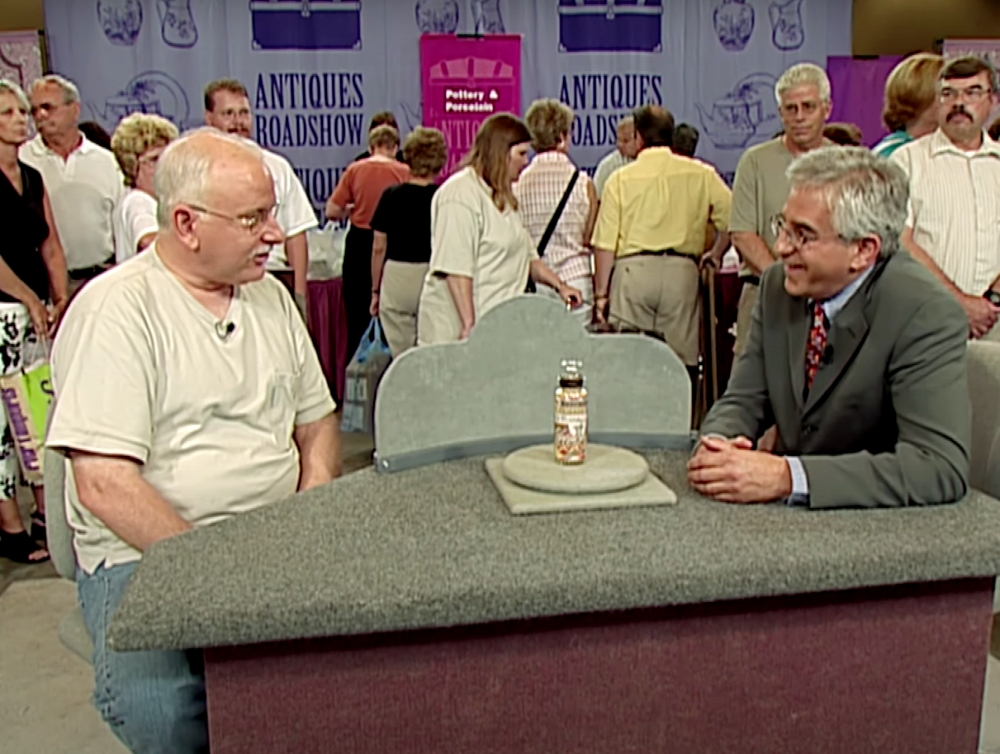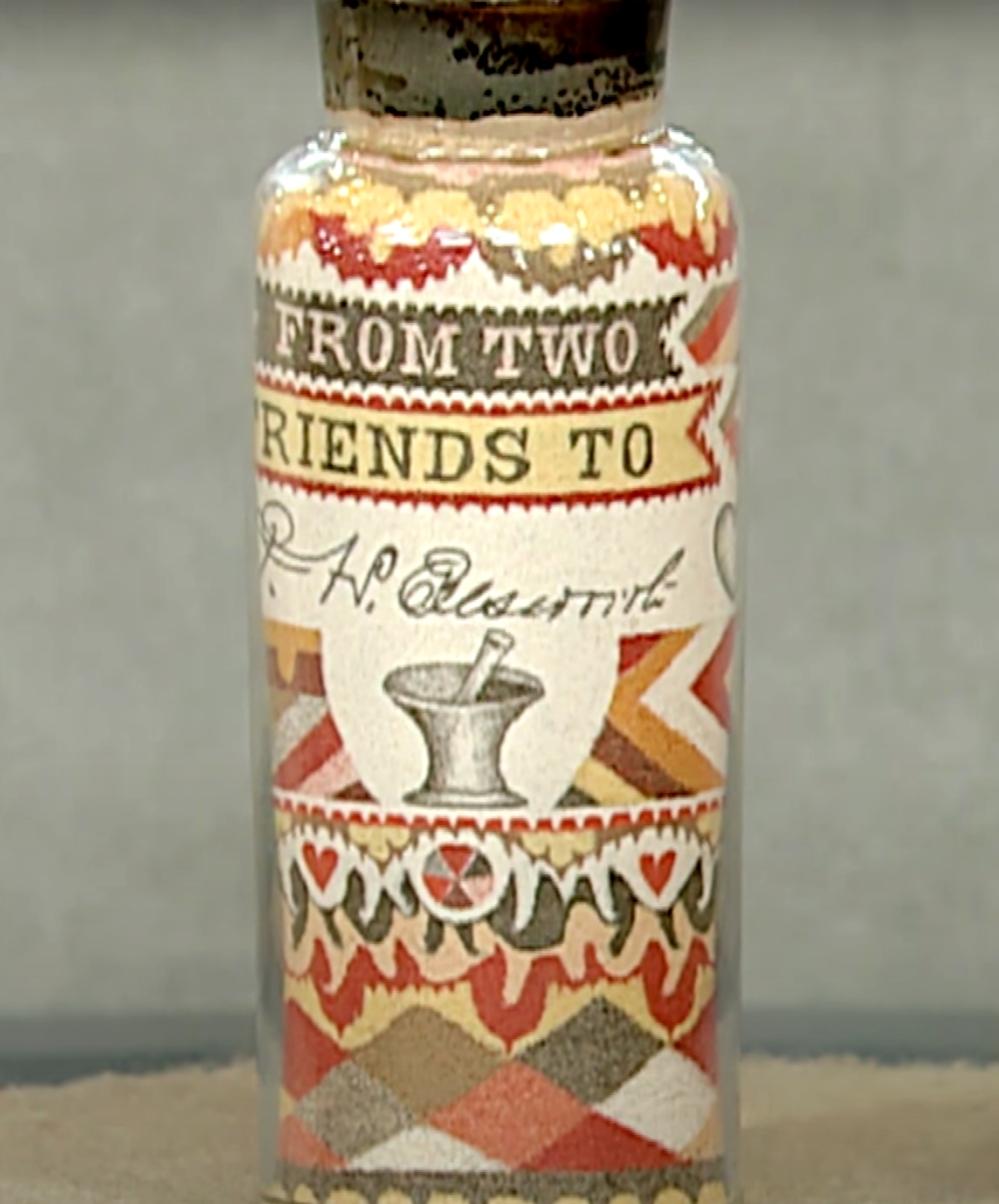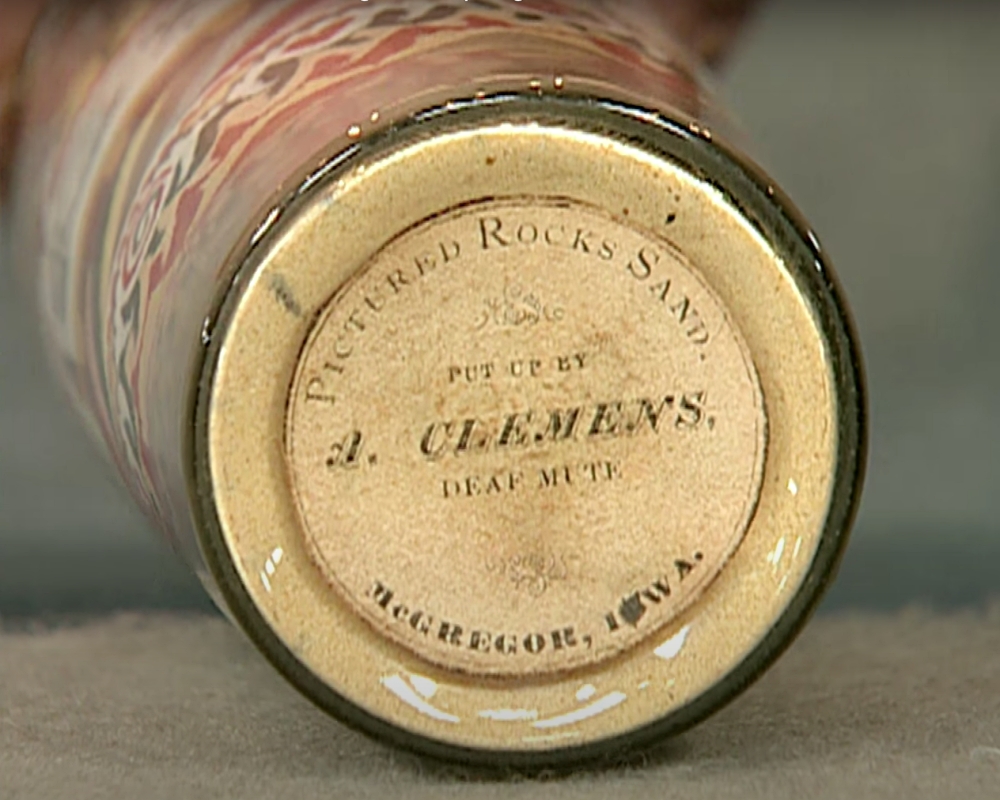20 Years Later Antiques Roadshow Sand Art Sells for 50 Times Original Appraisal
It’s like no other sand art you’ve seen before.
When we think of sand art many of us will recall vivid memories of earth-toned, amorphous shapes haphazardly placed into funky jars during the 1970s and 1980s. But, the process can be a true art form and it predates the modern era of sand art by a century. In the 1800s a growing movement of highly-developed folk art traditions gave rise to a sand art movement. And, one of America’s premiere sand artists was working towards the end of the 19th century. One of his works came was brought to the experts at Antiques Roadshow all the way back in 2002. As a rare follow-up to this incredible appraisal we now have a bit more history on the piece as well as a recent auction price and the results might surprise you!

Due to having encephalitis as a child Andrew Clemens had a host of medical problems throughout his short life and was deaf from an early age. After attending Iowa State School for the Deaf, Clemens learned the painstaking and meticulous work of making sand art.
Grain by grain he placed the different colors of sand into clear glass jars with such precision that it hardly seems possible. Intricate patterns such a flags, state seals, cursive writing, and checkerboard designs were some of the more astounding things he could achieve with only sand.
Posted by Andrew Clemens, sand artist on Thursday, August 13, 2015
The design that was brought to Antiques Roadshow was made for Dr. Prosper Harvey Ellsworth and featured a mortar and pestle as well as an eagle and an American flag. The inscription also in sand at the top reads, “from two friends” and the art shows Ellsworth’s signature. This special piece was made sometime in the 1880s and had been passed down through Ellsworth’s family ever since.

A paper label on the bottom reads, “Pictured rocks sand. Put up by A. Clemens Deaf Mute, McGregor Iowa.” Clemens was so skilled that he had a catalog of various scenes and features, each priced based on how long it would take him to complete the intricate designs.
Clemens arranged the sand using the tip of a fish hook and didn’t use glue to secure the grains. Instead the sand is simply packed in tightly and then sealed with a stopper and wax to prevent the image from distorting. Because of this the bottle can be turned upside down without the damaging the piece.

When it was appraised on air the value given was $4,000-$6,000. The appraiser, Wes Cowen, was interviewed in 2020 about the piece for the Antiques Roadshow: Extraordinary Finds 2 special, as he had been contacted by the original owner to possibly sell it. He described seeing the unique piece in 2002 and wondering why he had never heard of such a talented artist as Clemens, and why none of this colleagues that day had known about him either.
Since the initial appraisal 20 years ago works from Clemens have gained increasing publicity and the prices have gone up as well. In the end the Ellsworth piece went up to auction in November of 2020 with Skinner Auctioneers & Appraisers and sold for $275,000, blowing the presale estimate of $50,000-70,000 out of the water.
You can see the 2002 appraisal in the video below.
SKM: below-content placeholderWhizzco for DOT

